This blog post on calculating resistor value is an excerpt from Level A of our Intro to Robotics program. Level A covers building circuits, using a Raspberry Pi, and writing common code commands in Python. It contains 18 lessons including 70+ videos and 45 projects and activities. Sample lessons and a full scope and sequence for Level A can be found here.
Different size (value) resistors can be used for different projects. For example, an LED has maximum voltage and current limits. Most batteries however, will provide far more current than the LED can handle, so you would want to use an appropriate resistor with a battery and LED to moderate the flow of electrons and keep the LED operating safely.
Resistors are marked with colored bands which indicate their internal resistance value:
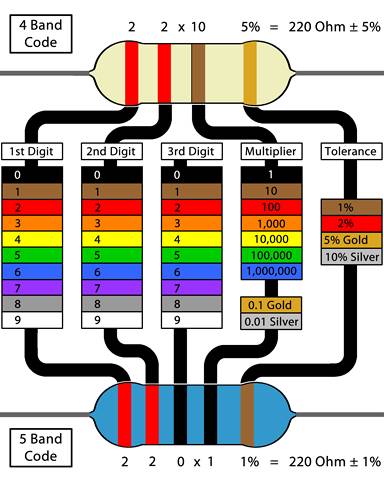
To read the value of a resistor, first determine how many bands your resistor has present. This will determine whether you use the four-digit code or the five-digit code.
Let's assume, for this example, that you have a resistor with color bands red, red, brown, and gold. To decode these bands, you would use the four-digit code. Matching each color to its value gives you 2, 2, 10, 5%. This means the first digit is a 2, the second digit is a 2, and the multiplier is 10 which means multiply the first two digits by 10, so 22 x 10 = 220 ohms. The gold band is the tolerance and gold stands for 5%, which means the actual value of this resistor value could vary ±5% of 220 ohms, or between 209 and 231 ohms.
Five band resistors work almost the same way, but there are three digits, a multiplier, and a tolerance band. Consider a five-band resistor with red, red, black, black, brown. Decoding the first three digits gives you 2, 2, and 0. The multiplier is black which is 1, so 220 x 1 = 220 ohms. The tolerance band is brown or 1%, so this resistor can vary ±1% of 220 ohms, or between 217.8 and 222.2 ohms.
The resistors included in the kit for this course, are labeled for you so there won’t be an immediate need to calculate resistance value manually.
Here are a list of color codes and values for the resistors provided in the Level A kit:
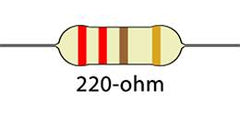
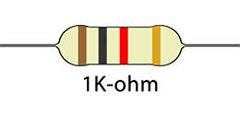
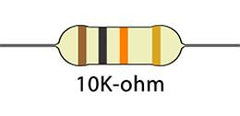
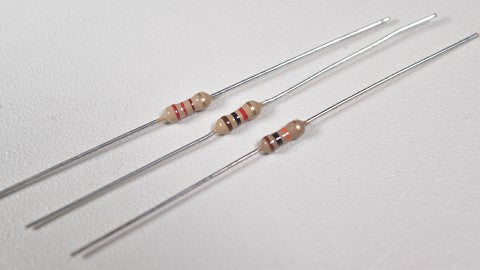
This blog post on calculating resistor value is an excerpt from Level A of our Intro to Robotics program. Level A covers building circuits, using a Raspberry Pi, and writing common code commands in Python. It contains 18 lessons including 70+ videos and 45 projects and activities. Sample lessons and a full scope and sequence for Level A can be found here.
